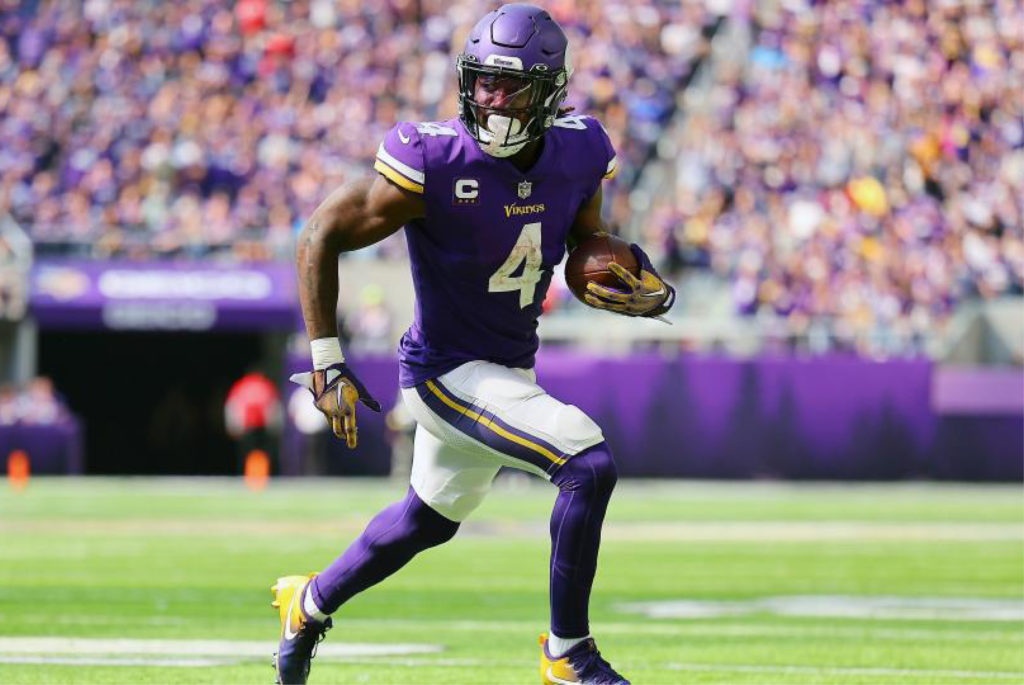
It was another exciting week of professional football with many games coming down to the final 15 minutes. One of those nailbiters was the Minnesota – Detroit game, where the Vikings were able to scrap out a W. Unfortunately for the Vikes, they did not walk away from the contest unscathed. Starting running back, Dalvin Cook, was carted off the field in the third quarter with what ended up being a shoulder dislocation.
Montvale physical therapist, Brendon Bolduc, PT, DPT, CSCS, is breaking down this injury and what to expect from the rest of Cook’s season.
Dalvin Cook sustained a dislocated shoulder in Week 3’s game. Can you describe the anatomy involved in a shoulder dislocation?
The shoulder is a ball and socket joint, in which the ball (the head of the humerus/upper arm bone) inserts into the socket (the glenoid cavity of the scapula/shoulder blade). A dislocation of this joint occurs when the ball is displaced from the socket.
The beauty of the shoulder is that it is incredibly mobile and can perform a wide variety of movements that other joints cannot. However, due to this mobility, it is also more unstable and more likely to dislocate than other joints, especially during high impact activities such as football.
How does his shoulder dislocate by running into his blocker?
During the play, Cook ran into his back of his blocker, leaning the anterior (front) aspect of his right shoulder directly into his teammate. The direction of force and the high impact on his shoulder caused the ball of the socket to displace. The impact also placed a great strain on the supporting structures of his shoulder, including muscles, ligaments, and other soft tissue structures – including the labrum. Additionally, Cook sustained a shoulder dislocation in the past and prior history of shoulder dislocations increases the risk for future dislocations.
When would an injury like this require surgery? What does the surgery entail? What is the typical recovery from this type of surgery?
Some individuals with the same injury may require surgery. Depending on the severity of the injury of his shoulder, Cook may eventually require surgery to his right shoulder. It is common for shoulder dislocations to injure the labrum, which is the case for Cook as well. The labrum is a supporting structure in the socket of the shoulder. It functions to increase the surface area glenoid fossa, covering more of the humeral head and thus improving the stability of the shoulder. The inferior glenohumeral ligament, which also assists in providing shoulder stability, is also sometimes injured during a shoulder dislocation.
If Cook were to opt for surgery, he would need to get his labrum repaired. Because this is a recurring injury, he may also require an anterior stabilization procedure which aims to tighten the structures surrounding the shoulder. This is sometimes done by repairing the ligaments or even deepening the glenoid cavity.
Will wearing a harness help Cook to continue to play? What shoulder his rehab focus on?
Cook may benefit from wearing a harness or a shoulder sleeve while he is playing. After sustaining a shoulder dislocation, it is common for a patient’s proprioception (the awareness of his shoulder in space) to be diminished afterwards. Providing compression can assist his proprioception and his awareness of his shoulder while he is out on the field. A harness type brace can also help to keep the humerus in a restricted range of motion less likely to cause the shoulder to dislocate.
Cook’s rehab will involve primarily shoulder stabilization exercises which will aim to improve the strength in his shoulder. Exercises targeting his rotator cuff, upper back musculature and overhead pressing movements with unstable weights such as a kettlebell will assist him as he aims to return to the field this upcoming week.
The medical information contained herein is provided as an information resource only, and does not substitute professional medical advice or consultation with healthcare professionals. This information is not intended to be patient education, does not create any patient-provider relationship, and should not be used as a substitute for professional diagnosis, treatment or medical advice. Please consult with your healthcare provider before making any healthcare decisions or for guidance about a specific medical condition. If you think you have a medical emergency, call your doctor or 911 immediately. IvyRehab Network, Inc. disclaims any and all responsibility, and shall have no liability, for any damages, loss, injury or liability whatsoever suffered as a result of your reliance on the information contained herein.
